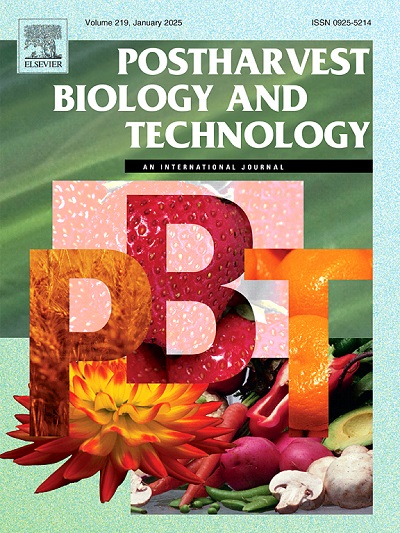Membrane-associated NAC transcription factor MaNAC169 is a positive regulator during banana fruit ripening
IF 6.4
1区 农林科学
Q1 AGRONOMY
引用次数: 0
Abstract
Fruit ripening is a complex process involving physiological and metabolic changes that influence fruit color, flavor, aroma, and texture, which is modulated by various hormones and key genes. NAC with transmembrane motif-like (NTL) transcription factors belong to the NAC gene family with transmembrane motifs at their C-terminus and play important roles in plant growth, development, and stress responses. However, the role of NTL during fruit ripening remains enigmatic. Here, we identified a NTL gene, MaNAC169, that was regulated by ethylene during banana fruit ripening. MaNAC169 contained a conserved TM in its far C-terminal region and localized in the nucleus and plasma membrane. Its active form, MaNAC169-ΔC4, acted as a transcriptional activator. Importantly, MaNAC169 directly bound to the promoters of MaACO1, MaEXP2, MaXET1, and MaGWD1 and positively regulated their gene expression. MaNAC169 also activated its own expression and could form a dimer with itself. Moreover, transient MaNAC169-ΔC4 overexpression in banana fruit promoted ripening by inducing target gene expression. Taken together, MaNAC169 positively modulated fruit ripening by activating the expression of ripening-associated genes. Our findings provide new insights into the transcriptional regulatory mechanisms involved in fruit ripening.
求助全文
约1分钟内获得全文
求助全文
来源期刊

Postharvest Biology and Technology
农林科学-农艺学
CiteScore
12.00
自引率
11.40%
发文量
309
审稿时长
38 days
期刊介绍:
The journal is devoted exclusively to the publication of original papers, review articles and frontiers articles on biological and technological postharvest research. This includes the areas of postharvest storage, treatments and underpinning mechanisms, quality evaluation, packaging, handling and distribution of fresh horticultural crops including fruit, vegetables, flowers and nuts, but excluding grains, seeds and forages.
Papers reporting novel insights from fundamental and interdisciplinary research will be particularly encouraged. These disciplines include systems biology, bioinformatics, entomology, plant physiology, plant pathology, (bio)chemistry, engineering, modelling, and technologies for nondestructive testing.
Manuscripts on fresh food crops that will be further processed after postharvest storage, or on food processes beyond refrigeration, packaging and minimal processing will not be considered.
 求助内容:
求助内容: 应助结果提醒方式:
应助结果提醒方式:


